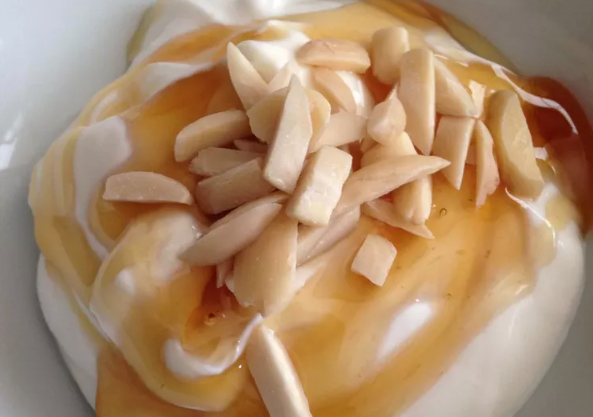Mastering Homemade Kefir Yogurt: A Nutrient-Rich Delight
Dive into the world of probiotic-rich goodness with our guide to crafting your own Kefir Yogurt at home. This creamy and tangy delight is not only bursting with flavor but also packed with beneficial bacteria that promote gut health and overall well-being. Join us on this culinary journey as we explore the simple steps, ingredients, and variations for making Kefir Yogurt from scratch. Whether you’re a seasoned fermenting enthusiast or a curious novice, this recipe is sure to inspire and delight!
Ingredients:
- Dairy:
- 4 cups Milk
- 1/4 cup Nonfat dry milk, instant powder
- Other:
- 1/2 cup plain kefir
Instructions:
- Heat the Milk: In a large saucepan, heat the milk over medium-low heat until it reaches a temperature of 180°F (82°C). Stir the milk occasionally to prevent scorching.
- Cool the Milk: Once the milk has reached the desired temperature, remove it from the heat and allow it to cool to 110°F (43°C). This temperature is ideal for activating the beneficial bacteria in the kefir culture.
- Mix in the Kefir: In a small bowl, combine the plain kefir with a small amount of the warm milk to create a smooth mixture. Gradually pour the kefir mixture into the remaining warm milk, stirring gently to combine.
- Incubate the Mixture: Transfer the milk and kefir mixture to a clean glass jar or container with a lid. Cover the jar loosely with a clean cloth or paper towel to allow for airflow. Place the jar in a warm, draft-free area, such as a kitchen counter or pantry, and let it sit undisturbed for 12-24 hours.
- Check for Consistency: After the incubation period, check the consistency of the kefir yogurt. It should be thickened and slightly tangy in flavor. If desired, you can let it ferment for an additional 6-12 hours for a stronger tanginess.
- Refrigerate and Serve: Once the kefir yogurt has reached the desired consistency, tightly seal the jar with a lid and refrigerate it for at least 4 hours to chill and firm up. Serve the kefir yogurt chilled as is or with your favorite toppings and mix-ins.
Cook Notes and Variations:
- Milk Options: Experiment with different types of milk such as cow’s milk, goat’s milk, or plant-based alternatives like almond milk or coconut milk to create unique flavor profiles.
- Sweeteners and Flavorings: Customize your kefir yogurt with sweeteners such as honey, maple syrup, or agave nectar, and flavorings such as vanilla extract, cocoa powder, or fruit purees for added sweetness and depth of flavor.
- Thickening Agents: If you prefer a thicker consistency, you can add additional nonfat dry milk powder or incorporate a thickening agent such as agar agar or gelatin into the mixture before incubating.
Keto and Low-Carb Versions:
- Keto-Friendly Option: Kefir yogurt can be enjoyed as part of a keto diet, as it is naturally low in carbohydrates and high in fat and protein. Opt for full-fat milk and plain kefir without added sugars for a keto-friendly version.
- Low-Carb Variation: To further reduce the carb content, you can use unsweetened almond milk or coconut milk instead of cow’s milk and omit the nonfat dry milk powder. Be sure to choose a plain kefir with minimal added sugars or make your own kefir from kefir grains.
Frequently Asked Questions (FAQs):
Q: What is the difference between kefir and yogurt? A: While both kefir and yogurt are fermented dairy products that contain beneficial bacteria, kefir typically has a thinner consistency and a tangier flavor compared to yogurt. Kefir is also fermented with a different combination of bacterial and yeast cultures.
Q: Can I use store-bought kefir as a starter for making kefir yogurt? A: Yes, store-bought kefir can be used as a starter culture for making kefir yogurt. Look for plain kefir with live and active cultures and use it to inoculate your milk to kickstart the fermentation process.
Q: How long does homemade kefir yogurt last in the refrigerator? A: Homemade kefir yogurt can be stored in the refrigerator for up to 2 weeks. Be sure to keep it tightly sealed in a clean container to prevent contamination and maintain freshness.
Q: Can I flavor kefir yogurt with fruit or other ingredients? A: Yes, kefir yogurt can be flavored with a variety of ingredients such as fruit purees, extracts, spices, or sweeteners to create custom flavor combinations. Experiment with different flavorings to find your favorite combinations.
Q: Is kefir yogurt safe for lactose-intolerant individuals? A: Kefir yogurt may be better tolerated by individuals with lactose intolerance compared to regular milk or yogurt, as the fermentation process reduces the lactose content. However, individuals with severe lactose intolerance should proceed with caution and monitor their symptoms.
In conclusion, homemade kefir yogurt is a nutritious and delicious addition to any diet, offering a bounty of probiotics and wholesome goodness in every creamy spoonful. With just a few simple ingredients and a bit of patience, you can create your own batch of velvety smooth kefir yogurt that is bursting with flavor and beneficial bacteria. Whether enjoyed on its own, mixed into smoothies, or used as a tangy topping for granola and fruit, kefir yogurt is sure to become a staple in your culinary repertoire. So gather your ingredients, embrace the art of fermentation, and embark on a journey to homemade kefir yogurt bliss!

